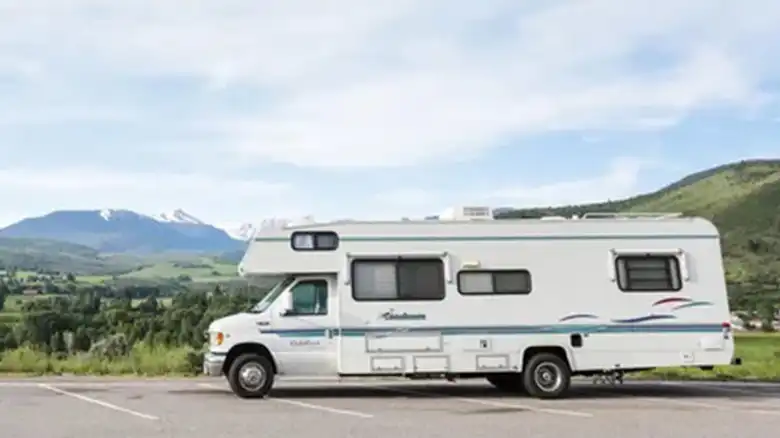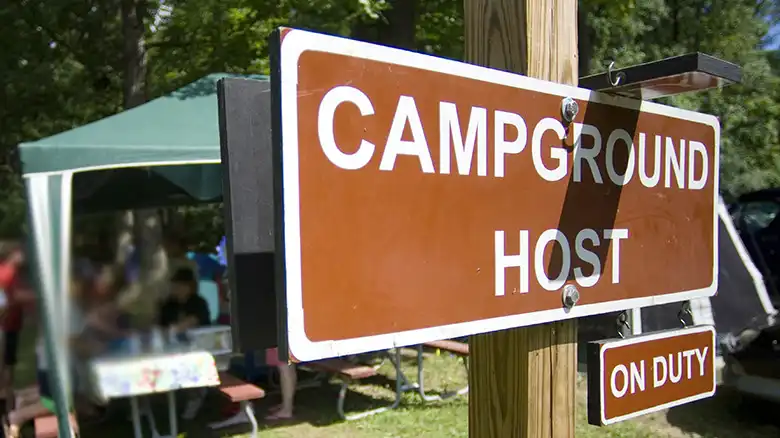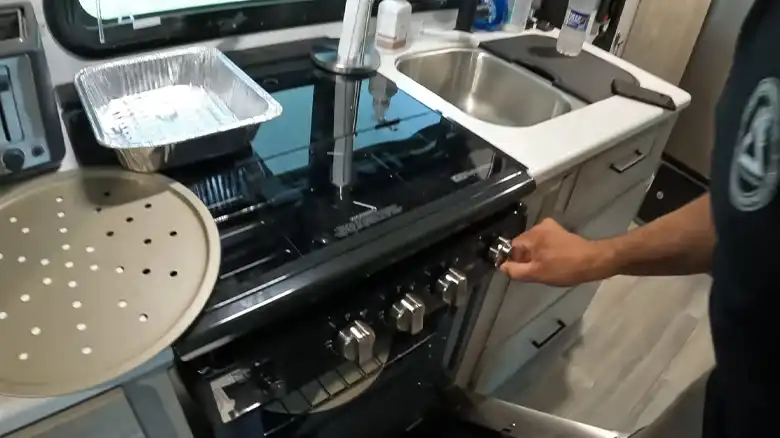Driving a Class C motorhome can seem daunting for first-timers. These large vehicles handle differently than passenger cars and require some adjusting. Many wonder if Class Cs are difficult vehicles to drive before purchasing or renting one.
Yes, driving Class C RVs takes practice and getting used to, but with proper preparation, they are not extremely challenging to maneuver.
But fear not, in this article, I will provide you with some effective tips for driving Class C motorhomes, and after implementing those tips, you’ll find driving it much easier than other vehicles.
Apart from these, we’ll compare them to driving cars and trucks, look at common difficulties beginners face, and provide tips to make handling Class Cs easier. By the end, readers will know what to expect when getting behind the wheel and have actionable advice to follow for a smooth, enjoyable trip. Stick around to learn the ins and outs of driving these popular recreational vehicles.

Challenges of Driving Class C Motorhomes
Driving a Class C motorhome can be more difficult than driving a car or truck due to several key factors:
Managing Size and Length on the Road
At up to 31 feet long, Class C RVs are much longer than the typical passenger car. Their extended frame and width make maneuvering more difficult than shorter vehicles. Trying to park, merge into traffic, or navigate tight spots tests a driver’s skills. It takes practice to learn exactly where the four corners of the motorhome are at all times.
Overcoming Blind Spots in Class Cs
The slab sides and boxier shape of Class C motorhomes cause large blind spots compared to cars. This makes changing lanes or backing up tricky without a spotter guiding the driver. Extended side mirrors help increase visibility but still may not eliminate all blind zones. Drivers need to constantly check mirrors and proceed cautiously.
Handling Height and Weight Safely
Fully loaded Class C motorhomes can weigh 15,000-26,000 pounds and stand up to 12.5 feet high. Drivers must remain vigilant about low overhangs when entering garages or tunnels and give themselves plenty of stopping distance. The immense weight also impacts acceleration and the ability to stop quickly. Going downhill, RVs gain momentum faster than a car would.
Coping with Cabin Noise During Trips
Class C motorhomes generate significant wind noise at highway speeds, making long drives more fatiguing. Packing families, pets, gear, and appliances also create crowded, chaotic interiors. The mental workload of piloting RVs carefully for long periods under these conditions tires out drivers.
Beginner Challenges in Driving Class Cs
First-time Class C motorhome drivers often face difficulties in the following areas:
- Reversing and Backing Up: Limited rear visibility and the long body of Class C RVs make reversing extremely challenging. Drivers struggle to judge distances by working only from side mirrors or a backup camera. Negotiating tight spaces like campsites in reverse becomes frustrating.
- Merging Into Traffic: Entering or exiting highways in a large Class C test drivers’ acceleration and gap judgment abilities. Finding holes amidst faster-moving cars and building speed to merge smoothly takes skill and experience many beginners lack. Sudden, rapid acceleration causes the RV to sway alarmingly.
- Tight Turns and Corners: Navigating tight 90-degree turns into campsites or getting around hairpin mountain switchbacks pushes Class Cs to their handling limits. Beginners struggle to gauge if they have enough room to swing their large vehicles around corners. Scraped sides from cutting turns too close are common incidents.
- Driving in Strong Winds: The tall, relatively light body of Class C motorhomes makes them vulnerable to crosswinds on highways. Beginners often lack experience countersteering properly and get buffeted onto road shoulders or across lanes in gusty conditions. This causes stress trying to correct the RV’s path at speed.
- Parking and Docking: Even large parking lots pose challenges lining up and fitting Class C motorhomes into spaces. Precisely backing into cramped campsites and hooking up utilities is tremendously hard without an expert guide. Beginners find even getting level and avoiding obstacles extremely frustrating.
Tips for Navigating Highways and Turns
While maneuvering a Class C RV may seem intimidating, the following tips will help beginners quickly master control:
- Take a Practice Drive Near Home
Find an open parking lot or quiet side roads to drive around before heading out on vacation. Get a feel for how the motorhome turns, stops, and reverses at low speeds first. Create some challenges by setting up cones to practice backing into tight spots. Confidently handle the basics before facing real-world highway traffic.
- Scope Out Routes in Advance
Use satellite views from Google Maps to examine destinations and campground roads ahead of time. Take note of tight turns and potential obstacles to watch for. Program directions into a navigation device to avoid surprises en route. Look at any downhill grades where momentum may carry the heavy vehicle faster than expected.
- Install Towing Mirrors
Affordable universal towing mirrors attach to standard side mirrors of Class C RVs. They extend visibility range drastically, nearly eliminating blindspots. Being able to clearly see down both sides of the RV body makes lane changes, passing maneuvers and tight squeezes through gates and trees much simpler.
- Take Wide Turns
Unlike cars that can whip quickly around tight corners, Class Cs need to approach turns slowly and make very wide, sweeping turns. Scan far ahead to see bends coming. Begin slowly moving towards the outside corner early to ensure room for the RV body to clear curbs and poles with a generous gap. Cutting turns too sharply risks damage.
- Use a Spotter When Backing
Having someone outside the vehicle guide drivers via hand signals or throw-and-go walkie-talkies when reversing is hugely helpful. A family member or fellow camper can see space constraints and obstacles the driver misses. Trust their guidance to smoothly back into pad sites without crunching fenders on trees or posts.
- Allow Longer to Accelerate and Stop
Understand Class C motorhomes take significantly more distance to speed up, slow down, and come to a complete stop due to their bulk and weight. Give plenty of room for entrance ramp merges. Anticipate stops at traffic lights earlier and brake gradually. Sudden acceleration or braking causes instability in the RV chassis. Build extra time cushions into travel plans to account for this.
Other Related Queries
What Is The Hardest Part Of Driving A Class C Motorhome?
The most difficult aspect of driving Class C RVs for beginners is reversing and backing into tight spaces like campsites. Limited visibility paired with the long body makes judging distances extremely tricky when maneuvering backward.
Should I Practice Driving My Class C RV Before Traveling?
Absolutely. Spend time getting accustomed to how the motorhome handles at low speeds by doing a shakedown cruise around local roads first. Master basics like turning, parking, and braking gently before taking it on the highway fully loaded.
Will A Backup Camera Eliminate Blind Spots?
Backup cameras help drivers see obstacles directly behind the vehicle. However, they do not fully eliminate blind spots caused by the slab sides and length of Class C RVs. Installing universal towing mirrors is the best way to expand rear visibility.
How Can I Make Tight Mountain Switchbacks Easier In A Class C?
Drive slowly, pull out towards the outside shoulder early to make a wide arc, and use a spotter outside the vehicle to guide you if necessary. Cutting these sharp curves too quickly risks damage from scrubbing curbs or guardrails.
Why Does My RV Sway Or “Fishtail” In High Winds?
Class C motorhomes sit relatively high off the road. Their flat sides act like sails catching gusts that push the tail around. Countersteering into the wind direction stabilizes the RV until the winds calm.


